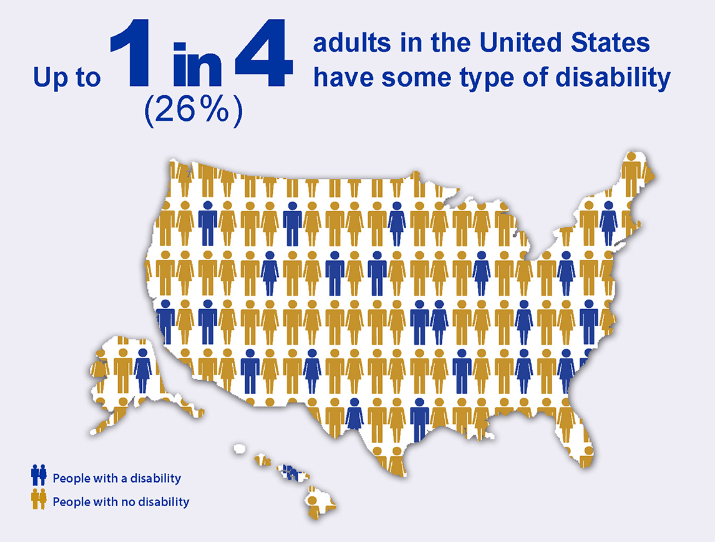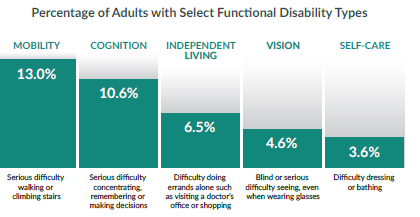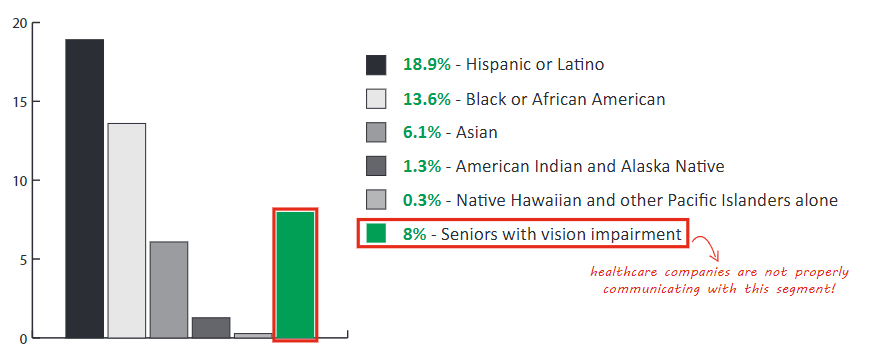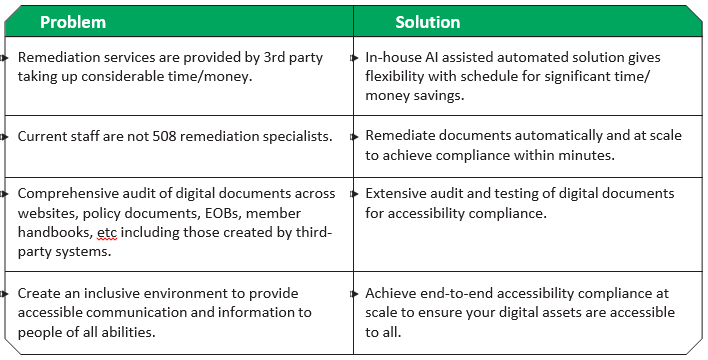Actually, digital accessibility has become increasingly important for healthcare providers, particularly those who serve Medicare beneficiaries. With the rise of telemedicine and the use of electronic health records, it’s crucial that Medicare providers ensure that their digital services are accessible to all patients, regardless of their abilities or disabilities. Digital accessibility refers to the design of digital content, tools, and technologies that can be used by people with disabilities, including those with visual, auditory, physical, or cognitive impairments.
To tell the truth, Medicare providers have a responsibility to ensure that their digital services are accessible to all patients, as accessibility is a key component of quality healthcare. Failure to provide accessible digital services can lead to barriers to care, exclusion, and discrimination for patients with disabilities. In this digital age, Medicare providers must work to ensure that their websites, mobile apps, telemedicine platforms, and electronic health records are accessible to all patients, including those with disabilities. By doing so, Medicare providers can improve patient outcomes, increase patient satisfaction, and provide high-quality care to all patients, regardless of their abilities or disabilities.
Prevalence of Vision impairment
Indeed the senior population in the United States continues to grow, as a result the prevalence of vision impairment has increased among this demographic.
According to the National Eye Institute, approximately one in three Americans aged 65 and older experience some form of vision-reducing eye disease, with cataracts and age-related macular degeneration (AMD) being the most common. These conditions can have a significant impact on seniors’ quality of life, as they can limit their ability to perform daily tasks, pay their bills online, or browse the internet.
Furthermore despite comprising 19 percent of the U.S. population, individuals with disabilities do not receive healthcare services of equivalent quality to those provided to able-bodied Americans.
Patients with cognitive or physical disabilities have lower likelihoods of receiving preventive care services, exhibit lower levels of satisfaction with their healthcare experiences, and incur greater expenses than their able-bodied counterparts.
Medicare Providers can take measures to improve the accessibility of their services, starting with the information displayed on their websites. By making their online resources more user-friendly for individuals with disabilities, they can help to enhance the quality of care received by this vulnerable population.
Disability landscape in the U.S.
In all honesty, according to the United States Census Bureau, up to 1 in 4 (26%) adults in the U.S. have a disability.

Figure 1. Chart shows the number of adults in the United States with some type of disability
As a matter of fact, approximately 20 million people 40 years and over in the United States have vision impairment. This includes vision loss, macular degeneration, diabetic retinopathy, etc. Visual impairments, including blindness, are one of the leading causes of loss of independence among people 40 years and older.
That’s why costs related to visual impairments total about $40 billion a year in the U.S. Medical costs account for almost 60 percent — $22 billion — of the total cost.
*Source: Georgetown University
What is CMS and Medicare Advantage?
The Centers for Medicare & Medicaid Services (CMS)
The Centers for Medicare & Medicaid Services (CMS), is a federal agency within the United States Department of Health and Human Services (HHS) that administers the Medicare program.
It works in partnership with state governments to administer Medicaid, the Children’s Health Insurance Program (CHIP), and health insurance portability standards.
What is Medicare Advantage?
Medicare Advantage plans are Medicare-approved policies offered by private companies as an alternative to traditional Medicare coverage. Medicare is generally available for people age 65 or older, and younger people with disabilities. More than 28 million people, about 48% of those receiving Medicare benefits, were enrolled in a Medicare Advantage plan in 2022.
Some Medicare Advantage plans cover additional costs not covered by traditional Medicare, including vision, dental, and hearing-related expenses.
According to data from CMS, the overall number of Medicare providers is approximately 1.5 million in 2021. The average monthly enrolment of seniors in Medicare rose from 54.5% in 2020 to 57.3 in 2022.
*Source: CMS Fast Facts 2023
Is Your Medicare Advantage Healthcare Service Prepared to Serve the Increasing Number of Americans with Disabilities?
As a matter of fact, disabilities cost $400 billion per year in healthcare expenditures. *Source: United States Census Bureau
What is more, inn the United States, one out of every five adults has a disability. Mobility impairments which is the most common type of disability affects 13% of adults.

Figure 2. Graph shows the percentage of U.S. adults with specific disabilities
Regulations and Laws
Centers for Medicare and Medicaid Services Regulation
The Centers for Medicare and Medicaid Services (CMS) that administers Medicare programs requires its communications in the form of policy documents, explanation of benefits (EOBs), and member handbooks etc. to be accessible to all its beneficiaries, regardless of their ability.
The Americans with Disabilities Act
The Americans with Disabilities Act (ADA) prohibits discrimination and ensures equal opportunity for persons with disabilities in employment, State and local government services, public accommodations, commercial facilities, and transportation.
Section 508 of the Rehabilitation Act
Section 508 of the Rehabilitation Act requires federally funded entities to make their electronic and information technology accessible, or provide an alternative, for persons with disabilities. A 2017 Amendment requires organizations to ensure that all of their information and communication technology conforms with the Web Content Accessibility Guidelines (WCAG) 2.0 Level A and Level AA standards.
How do Medicare providers focus on accessibility currently?
Actually, most Medicare providers are not aware of accessibility laws and regulations, accessibility barriers on their websites, or how to enable patients with vision impairments to access the content on their website.
Moreover, as the population of Americans with disabilities continues to increase, Medicare providers are yet to fully prepare to meet their unique needs. What is more, despite their efforts, most Medicare providers websites fail to comply with regulations. Individuals with disabilities still encounter numerous obstacles when seeking quality healthcare.
For instance, these barriers can originate from a patient’s initial interaction with a healthcare provider’s website. For instance, a visually-impaired patient may rely on assistive technology to schedule an appointment. If the website is not designed appropriately, the patient may be unable to comprehend the content on the page, which can lead to a frustrating experience.
8% of your subscribers are visually impaired. How do they read your digital documents?
Most Medicare Advantage providers do not know how these segment of subscribers access and read digital communications.
Most Medicare providers assume translation will help solve the problem
In recent times, there has been an increased emphasis on diversity, equity, and inclusion (DEI) in the healthcare sector.
Healthcare companies cater to their diverse subscribers from different nationalities (ex: Spanish, Chinese, Arabic, etc.,) by translating their digital healthcare communications into different languages.
However, by ignoring their largest constituents – subscribers with vision impairments – healthcare companies are excluding people with disabilities by not providing equal access to information and communication for all.

Figure 3. Healthcare providers ignore 8% of seniors with disabilities
20M seniors with vision impairments do not have access to healthcare communications. This includes people with vision loss, macular degeneration, diabetic retinopathy, etc. According to the CDC,
- Approximately 8% million people 40 years and over in the United States have vision impairment
- Vision disability is one of the top 10 disabilities among adults 18 years and older
What are the healthcare communications need to be made accessible to everyone?
The Centers for Medicare and Medicaid Services (CMS) which administers all Medicare programs, including Medicare Advantage programs, requires all healthcare communications to be accessible to be accessible to all its beneficiaries, regardless of their ability. These include:
- Policy documents
- Medical records
- Explanation of benefits (EOBs)
- Member handbooks
- Websites
- Multimedia, etc.
Why should Medicare Advantage providers make digital accessibility a top priority?
Medicare providers must prioritize digital accessibility to ensure patients with disabilities can have a seamless digital experience. However, many Medicare providers do not know where to start with digital accessibility and CMS compliance.
In the last three years more than 10k Title III (ADA) healthcare litigations were filed. In addition there are federal agency enforcement actions.
Rising Digital Accessibility Lawsuits in the Healthcare Sector
Digital accessibility lawsuits are at an all-time high, and no Medicare Provider organization is invulnerable to this trend. Nor is it expected to slow down. For example, in 2022, more than 3,000 organizations endured accessibility-related lawsuits for compliance violations.
The legal precedent favors digital accessibility, resulting in litigation against thousands of organizations—including many in the healthcare sector. Examples include the following cases:
- On October 25, 2021, Cheryl Thurston filed a complaint in California against K Health, Inc., alleging that their website was inaccessible. K Health is a Health Care Providers and Services Company founded in 2016 and headquartered in New York.
- On September 14, 2021, Brittney Mejico filed a complaint in California against WCG Health Management, Inc., alleging that their website is not sufficiently digitally accessible. WellCare Health Plans was founded in 1985 and is headquartered in Tampa, Florida.
What happens if Medicare Providers are not compliant?
Non-compliance with CMS regulations and standard accessibility laws results in:
- Failure to comply with CMS audits
- Open to potential lawsuits
- Unable to avoid expensive litigations
- Failure to improve member experience
- Healthcare institutions are mandated to add additional workers
- Brand reputation is hit
Best practices to achieve digital accessibility
Medicare Providers have a massive opportunity to enhance their digital accessibility initiatives and foster inclusive healthcare communications for all.
Here are five strategies for improving digital accessibility on your website for people with disabilities:
Integrate your website with assistive technology
Assistive technology is a useful tool that accommodates people who have difficulty typing, moving a mouse, reading a screen, or using a touch-screen smartphone. This technology enables them to effortlessly navigate your website, research your services, schedule appointments, and access tests.
By providing assistive technology, healthcare providers can ensure that individuals with physical disabilities can engage with their services and enjoy a seamless experience across all digital platforms.
Allow users with disabilities to test your websites and digital content
To guarantee that a website operates as intended, web developers carry out automated tests. Nonetheless, these tests can only identify roughly 30% of the accessibility issues that individuals with disabilities may encounter when accessing website content.
Therefore, it is recommended that organizations supplement automated testing with manual and functional testing conducted by people with disabilities. By testing a website using a variety of assistive technologies, individuals with disabilities can report on any difficulties they experience while accessing the website and help to identify accessibility issues that automated testing may miss.
Allow people who use augmentative and alternative communication (AAC) devices to view your online content
Integrating AAC (Augmentative and Alternative Communication) devices into your digital accessibility toolkit simplifies communication for individuals who have little or no speech ability. By providing this technology, they can navigate your website and schedule appointments without difficulty.
Make digital content available in multiple, alternate, accessible formats
Ensuring digital accessibility goes beyond your website; it involves making all of your content and multimedia files accessible to everyone. To offer an inclusive experience, it is essential to take additional steps such as providing text alternatives for images, closed captioning and transcripts for videos, and audio descriptions of text files. Additionally, remediating your PDFs is crucial to make them compliant with relevant standards and ensure proper tagging.
Design your website for people with disabilities
While in the development phase, it is essential to identify any potential barriers that may impede persons with disabilities from navigating your website and accessing information. Some ways to mitigate these barriers include using large, readable fonts, ensuring all links are clear and visible, offering multiple navigation options, and enabling keyboard-only interaction with your website.
codemantra
Achieve compliance for your digital information as per global accessibility standards with codemantra’s accessibilityInsight™. The cloud-based platform provides the most efficient solution for document accessibility compliance.
About accessibilityInsight™
To achieve accessibility compliance, accessibilityInsightTM validates documents (PDF, Word, Excel, EPUB, and PowerPoint documents), fixes, and remediates accessibility errors in PDF documents. AIN offers document remediation with machine learning suggestions along with human oversight.
Highlights
- Hassle free organization of documents.
- Quick and easy validation and remediation support to achieve compliance.
- Supports machine learning alongside human intelligence.
- Comprehensive user experience throughout the process of validation and remediation.

Why accessibilityInsight?
- Validation – Comprehensive manual validation across all document types to comply with PDF U/A standards and WCAG guidelines.
- Human assisted intervention – Users can provide alt text for equation and review auto-generated Math descriptions.
- Turnaround time – Reduces time taken to make PDFs accessible.
- Seamless integration – Easily integrates into any business application or platform workflow.
How codemantra can help?
Achieve Digital ADA compliance. Avoid expensive litigation and create inclusive member experience. Get all your digital information compliant quickly and effectively. Ensure accuracy with scalable AI-driven modules and eliminate disproportionate burden.

Need help making your digital healthcare communication and information accessible and compliant with ADA, Section 508, and CMS regulations? Reach out to us today: engage@codemantra.com
You can also mail us any queries or fill out the form below. We will get back to you!








